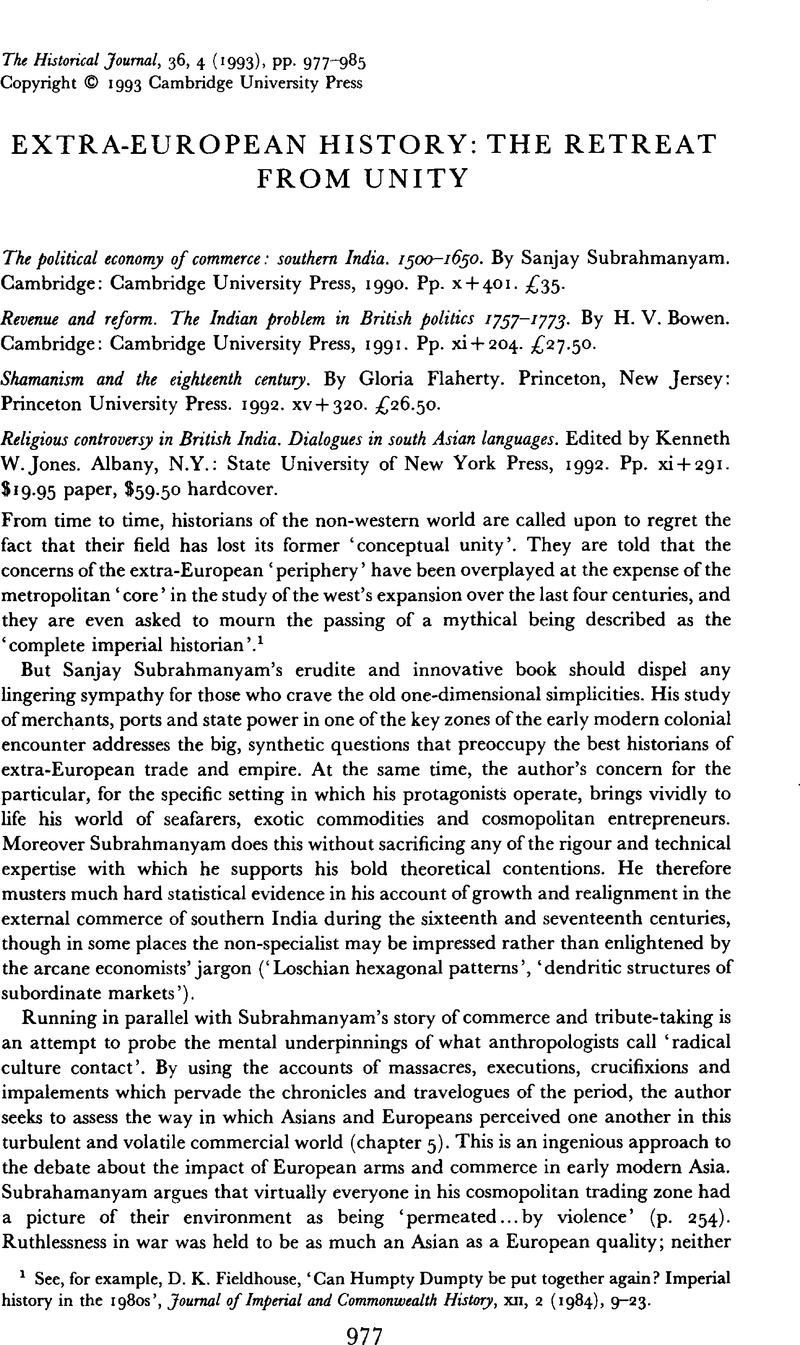No CrossRef data available.
Published online by Cambridge University Press: 11 February 2009

1 See, for example, Fieldhouse, D. K., ‘Can Humpty Dumpty be put together again? Imperial history in the 1980s’, Journal of Imperial and Commonwealth History, XII, 2 (1984), 9–23CrossRefGoogle Scholar.
2 Steensgaard, Niels, The Asian trade revolution of the seventeenth century (Chicago, 1974)Google Scholar.
3 See Furber, Holden, ‘Asia and the West as partners before “empire” and after’. Journal of Asian Studies, XXVIII, 4 (1969), 711–21Google Scholar; and in King, B. B. and Pearson, M. N., The age of partnership. Europeans in Asia before dominion (Honolulu, 1979)Google Scholar.
4 Bayly, C. A., Imperial Meridian. The British empire and the world 1780–1830 (London and New York, 1989)Google Scholar; Marshall, P. J., Bengal: the British bridgehead: Eastern India, 1740–1828. The New Cambridge History of India, II, 2 (Cambridge, 1988)CrossRefGoogle Scholar.
5 Anderson, Benedict, Imagined communities. Reflections on the origin and spread of nationalism (London, 1983)Google Scholar.